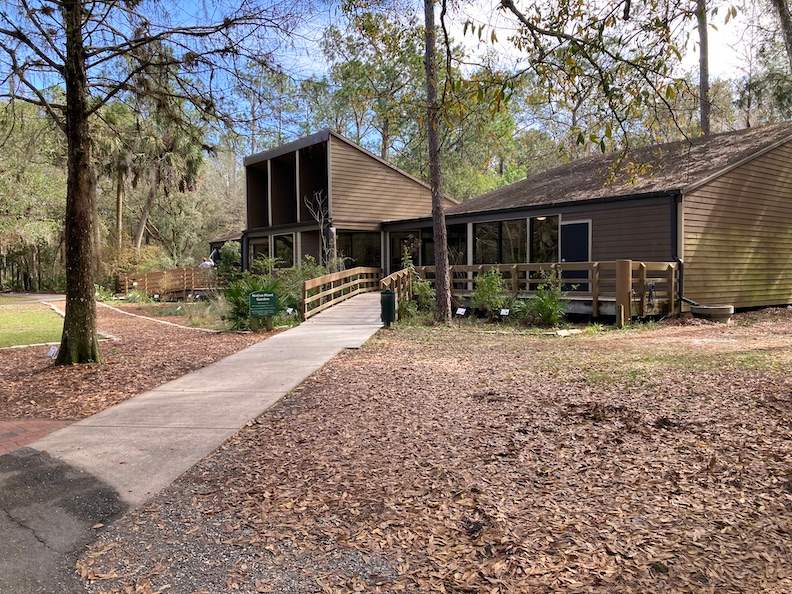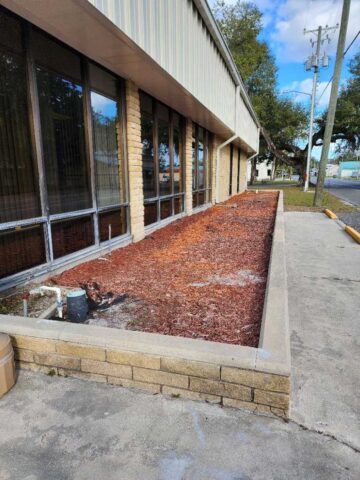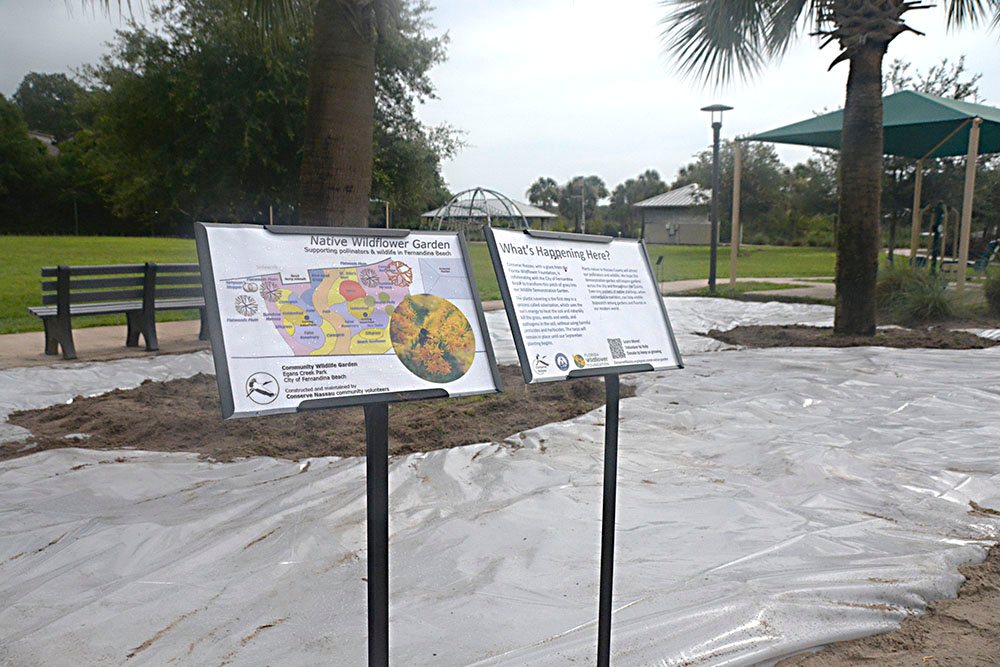Foundation awards 9 Viva Florida grants
Pictured above: Conserve Nassau prepares their VIva Florida demonstration garden site at Egans Creek Park through solarization. Photo provided by Joyce Tuten.
The Florida Wildflower Foundation is pleased to announce the recipients of this year’s Viva Florida Landscape Demonstration Garden grants. Nine grants were awarded for the following projects:
Carrollwood Village Park, Tampa
UF/IFAS Extension Hillsborough County is installing a demonstration garden in Carrollwood Village Park near the walking trail. Regular educational programming will be conducted by UF/IFAS and park staff, including a summer kids’ camp that will utilize the garden in their activities. This is a relatively new park, yet it received more than one million visitors last year.
Egans Creek Park, Fernandina Beach
Conserve Nassau will create a native demonstration garden at Egans Creek Park. The park is located on Atlantic Avenue, one of the busiest roads on Amelia Island, and near popular tourist destinations. Conserve Nassau hopes visitors from around Florida will be inspired by the native garden, which will include Tropical sage (Salvia coccinea), Coreopsis (Coreopsis lanceolata), Goldenrod (Solidago spp.) and Dune sunflower (Helianthus debilis) among other native species. Read more about the project here.
Lettuce Lake Conservation Park, Tampa
UF/IFAS Extension Hillsborough County is enhancing a demonstration garden surrounding the Nature Center at Lettuce Lake Conservation Park. The garden already contained a variety of native plant species, and will be supplemented with Beautyberry (Callicarpa americana), Pink swamp milkweed (Asclepias incarnata), Florida greeneyes (Berlandiera subacaulis) and Aquatic milkweed (Asclepias perennis) and other native wildflowers. Planting took place on June 28, 2023. Read more here.

Panhandle Butterfly House & Nature Center, Milton
Keep Santa Rosa Beautiful, Inc is preparing a demonstration garden at the Panhandle Butterfly House & Nature Center. They have many educational components planned, including a brochure about the garden for visitors, a PowerPoint presentation and video on native gardening, and signage with the common and scientific names of the plant species. They are looking forward to the garden being part of their annual Pollination Celebration and Monarch Madness events.
Greenbriar Park, Wellington
Wellington Garden Club’s vision for a demonstration garden is to create a meadow to promote wildlife diversity. The meadow will be installed in an open area surrounded by an existing native tree and shrub identification park, and will include Pineland lantana (Lantana depressa), Narrowleaf silkgrass (Pityopsis graminifolia), False rosemary (Conradina spp.) and other species to encourage insect visitation. The Village of Wellington will provide signage about the garden and individual plant species. Information about the garden will be posted on the Village of Wellington’s website.
Hollis Garden, Lakeland
The City of Lakeland will incorporate a native plant demonstration area in Hollis Garden, a botanical display garden located in the city’s historic Lake Mirror Park. The garden receives around 30,000 visitors annually. Coral honeysuckle (Lonicera sempervirens), Stokes’ aster (Stokesia laevis), Black-eyed Susan (Rudbeckia hirta) and Forked bluecurls (Trichostema dichotomum) are a few of the species to be featured in the native garden.
City Hall, Cross City
The Garden Club of the Tri-Counties will create a demonstration garden at Cross City’s City Hall and Police Department. The garden will be decorated with items that represent the industries of Cross City, and the south side will have a beach dune theme, with plant species such as Dune sunflower (Helianthus debilis), Beach morning-glory (Ipomoea imperati) and Sea purslane (Sesuvium sp.). Interpretive signs and labels for the plants will be installed.

Under the Palms Park, Mexico Beach
Port St. Joe Garden Club will establish a demonstration garden at Mexico Beach’s Under the Palms Park near the walking path. The garden will feature Spotted beebalm (Monarda punctata), False rosemary (Conradina sp.), Elliott’s lovegrass (Eragrostis elliottii) and Blazing star (Liatris sp.). Signage will describe the principles of using native plants in landscaping.
Micanopy Bat House and Municipal Complex, Micanopy
Preserve Micanopy will transform an open turf field into a native plant garden that will provide a food and habitat for pollinators, including the many bats that inhabit the area. The park is easily walkable from the Micanopy Town Playground, Town Hall, fire station, post office, library and two public schools. Preserve Micanopy will create outreach programs with students at Micanopy Academy and Micanopy Area Cooperative School. The town library has a seed library and will collaborate on educational programming for adults.
Would you like to see more demonstration gardens across the state?
Consider making a donation today in support of our Viva Florida grant program.
You never know who you might inspire through a garden you helped fund.
All Viva Florida gardens must be in highly visible and publicly accessible areas with frequent pedestrian traffic. Plants grown as part of the project must be native to Florida. Projects must have strong educational components. Viva Florida educates the public about the importance of native plants in providing food and habitat for wildlife, as well as other ecological benefits. Applications for the 2024-25 Viva Florida grant period will be accepted between Jan. 1 and Mar. 15, 2024. If you are interested in applying, click here to review project guidelines.
The Florida Wildflower Foundation provides these grants with help from sales of the Florida State Wildflower license plate. Get yours today!

